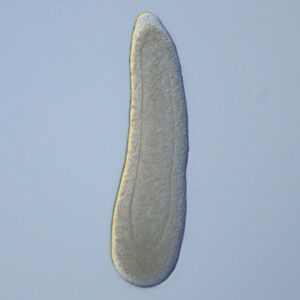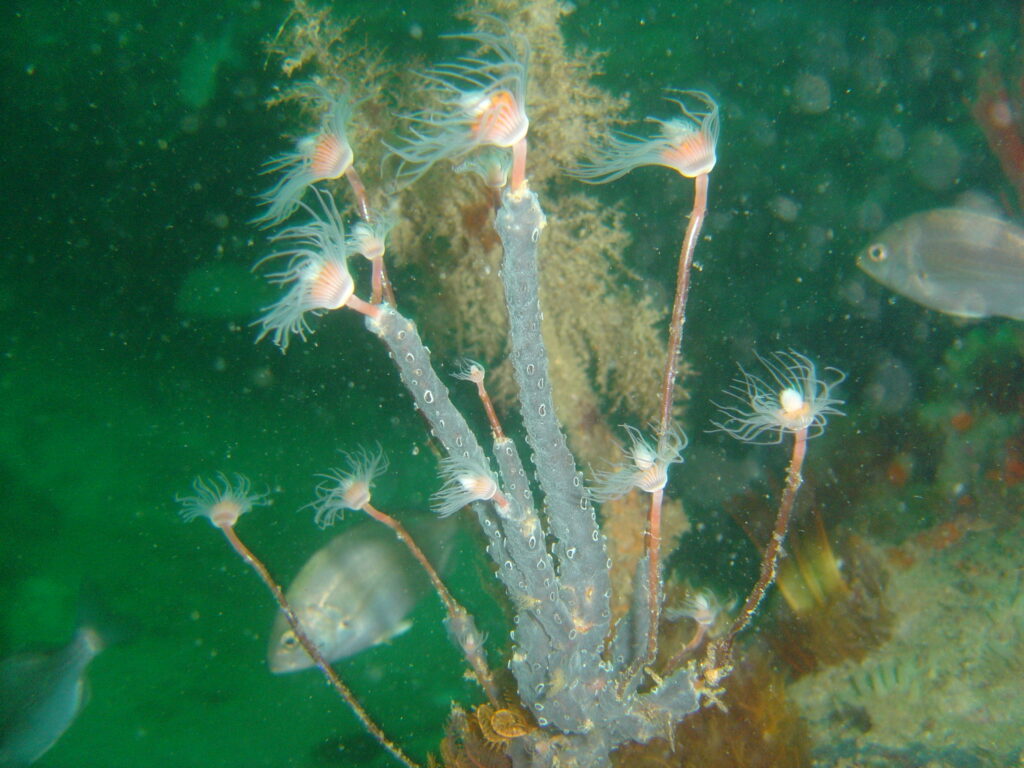[ad_1]
Birch, S., & Plachetzki, D. (2023). Multisensory integration by polymodal sensory neurons dictates larval settlement in a brainless cnidarian larva. Molecular Ecology, 00, 1– 16. https://doi.org/10.1111/mec.16968
We sense the world around us in many different ways, including sight, hearing, and touch. Our brains face the task of interpreting all of this information, and deciding how we should behave or respond. Doing this kind of “multisensory integration” is complicated because it requires processing information from many different sources, rather than just one.

Many animals in the ocean have a larval stage that is “pelagic,” or free-swimming, and an adult stage that remains stuck in one spot for its whole life (for example, corals and barnacles). This process is called settlement, and there are no take-backs: once a larva chooses a place to settle, it’s stuck there and will either live or die depending on the quality of the habitat. Larval settlement is exactly the type of task that animals need to use sensory information to solve, so scientists set out to answer the question:
How do larvae use their senses to choose the best places to settle?
Brainless, but not stupid
Scientists set out to answer this question in the larvae of an animal called a hydrozoan. This gelatinous animal is a cnidarian, like jellyfish, sea anemones, and corals. Here’s where it gets weird: cnidarians don’t even have brains! Instead, their neurons (the cells that make up the nervous system) are arranged in a kind of decentralized network. How would a creature with a relatively simple nervous system handle the complex task of multisensory integration?

The researchers used many different techniques to collect data. First, they used molecular biology to identify and describe the neurons of the larvae. Next, they used experiments to identify different signals that might help the animal choose its settlement spot (such as light, chemical cues, or rough texture). Finally, the scientists identified sensory genes found in specific neurons and measured these genes during the process of settlement. This way, the scientists could find the specific cells the cnidarian uses to sense its environment.
Where do larvae go, and why?
The researchers found that each of the three cues (light, chemicals, and texture) affected how likely larvae were to settle. In general, larvae preferred light environments and chemical cues, but didn’t like rough textures. However, larvae were most likely to settle when all three cues were combined (even though rough texture, by itself, made larvae less likely to settle). This suggests that the animals make decisions based on all three signals together, and that the response to one signal depends on the others.
This study shows that even simple critters can make decisions based on complex information. By studying the nervous systems of simpler animals, we actually learn how our own, more complex nervous systems might have evolved. Additionally, learning about how and where marine larvae settle can help us better understand marine ecosystems. Collectively, the choices of millions of individual larvae form the foundation of entire communities, such as coral reefs.
Cover image source: Wikimedia Commons

I am a PhD student at MIT and the Woods Hole Oceanographic Institution, where I study the evolution and physiology of marine invertebrates. I usually work with zooplankton and sea anemones, and I am especially interested in circadian rhythms of these animals. Outside work, I love to play trumpet, listen to music, and watch hockey.
[ad_2]
Source link
